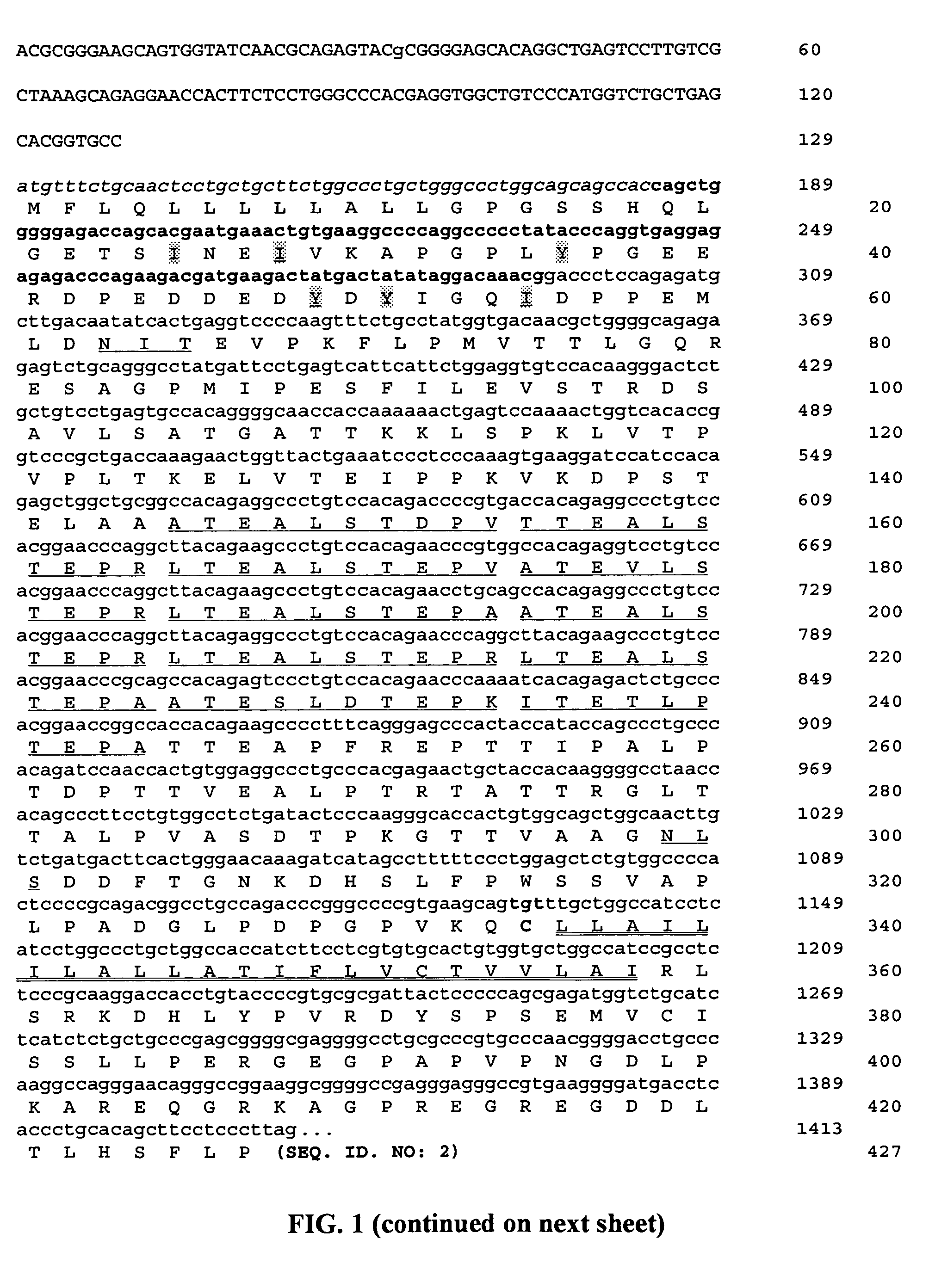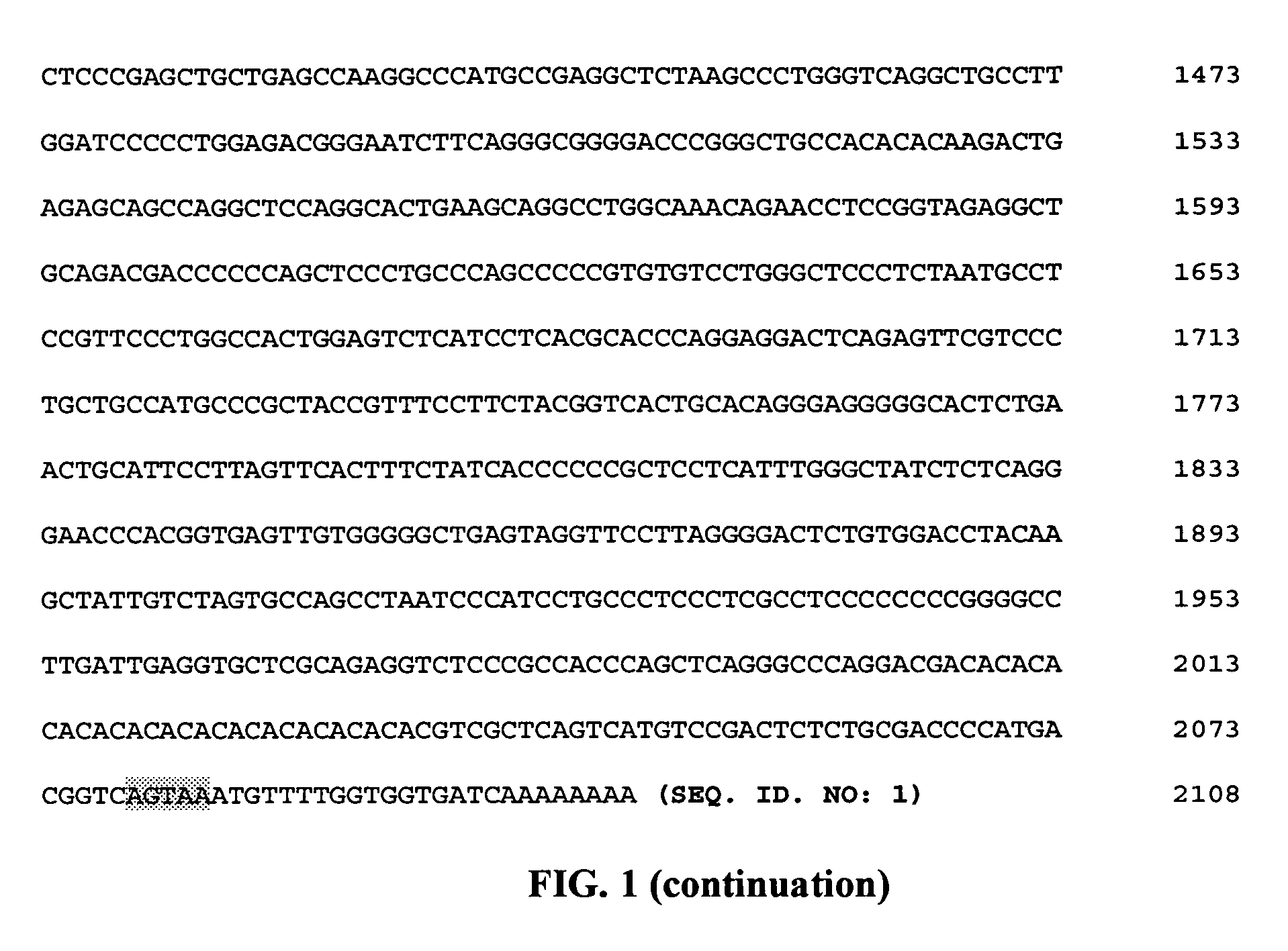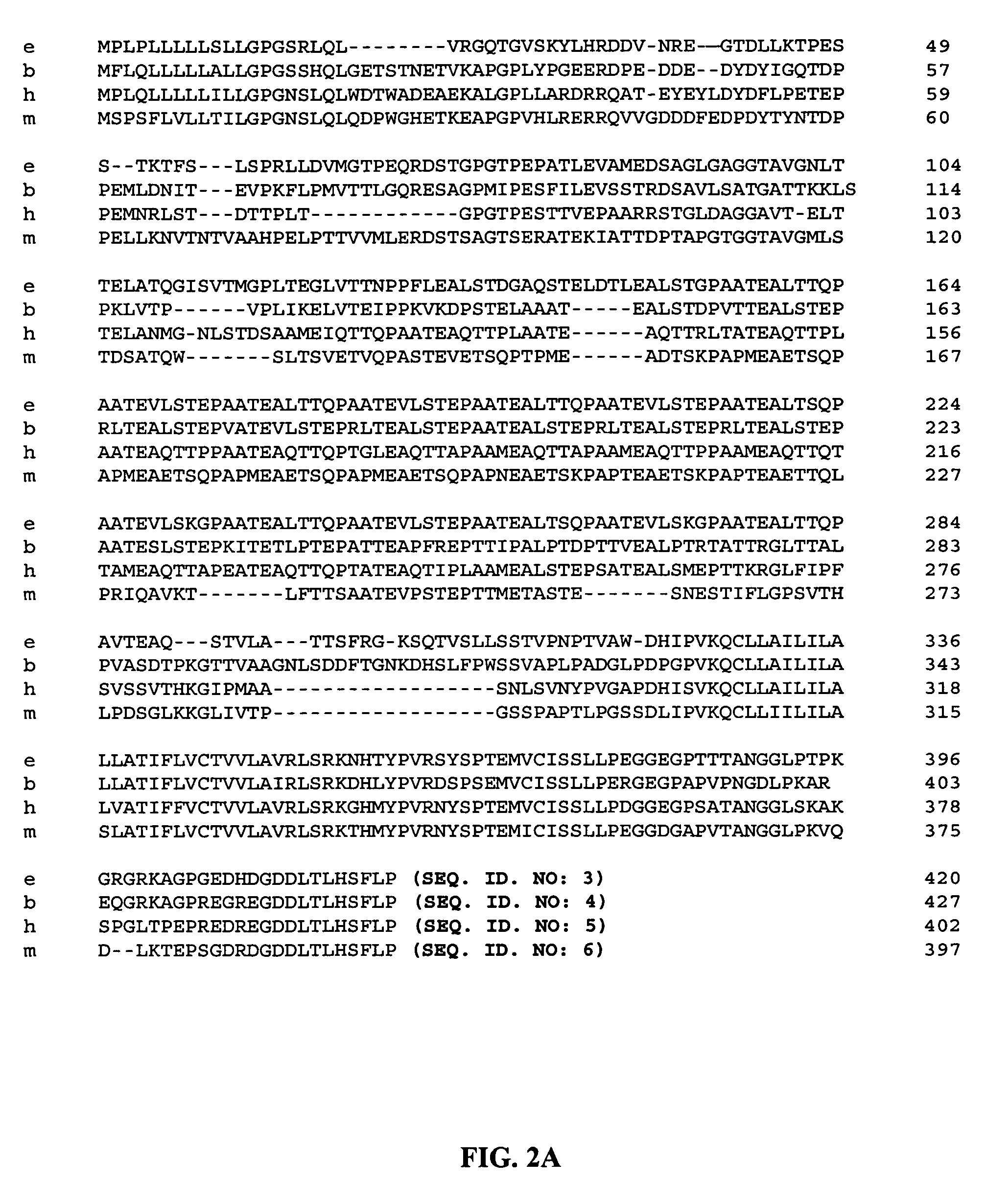Bovine P-selectin glycorpotein ligand-1
- Summary
- Abstract
- Description
- Claims
- Application Information
AI Technical Summary
Benefits of technology
Problems solved by technology
Method used
Image
Examples
experiment 1
Sequencing bPSGL-1 and Investigating its Cross Reactivity with Human PL1 Ab
[0059]Human PL1 Ab is the human monoclonal blocking Ab for h-PSGL-1. Peripheral blood was obtained by jugular venipuncture from healthy Holstein cattle using sodium citrate (0.38% final volume) as an anticoagulant. The whole blood was lysed in a lysing solution as described previously (Paltrinieri et al., 2004), and the leukocytes were collected by centrifuge for 10 min at 250×g. The leukocytes were then washed three times in 1×PBS. Leukocytes were either lysed in TRIZOL reagent (Invitrogen, Carlsbad, Calif.) for RNA isolation or were resuspended in 1×PBS / 2% BSA / 0.01% sodium azide solution, fixed in paraformaldehyde (PFA) (1% final concentration) for 30 minutes at 4° C. and washed using PBS / BSA for later PL1 staining and FACS analysis.
[0060]To identify bPSGL-1 cDNA, an equine PSGL-1 (ePSGL-1) primer (Xu et al., 2005) was used to amplify bovine cDNA synthesized from leukocyte total RNA. An ePSGL-1 primer seque...
experiment 2
Cloning Bovine PSGL-1 ORF
[0072]Total RNA from bovine monocytes will be activated for 24 hr with LPS (100 ng / ml) will be prepared with Trizol reagent (Sigma, St. Louis, Mo.). 1 μg total RNA will be reverse transcribed into cDNA using avian myeloblastic virus (AMV). The full-length of bovine PSGL-1 open reading frame (ORF) will be amplified by polymerase chain reaction (PCR) using primers for the known sequence of PSGL-1, as well as the unique restriction sites Xho I and BamH I on the 5′ and 3′ end respectively. The corresponding fragments will be purified by agarose electrophoresis and cloned into the TOPO vector (Invitrogen) to confirm the sequences. Thereafter, the fragment will be digested with Xho I and BamH I, and subcloned into pcDNA3.1-Myc-His expression vector (Life Technologies, Invitrogen).
experiment 3
Transfecting and Expressing PSGL-1
[0073]CHOdhfr− cells expressing C2GnT, FucT-VII and C2GnT+FucT-VII will be maintained in Dulbecco's modified Eagle's medium (DMEM) containing 10% FBS, 1×HT (100 μM hypoxanthine, 16 μM thymidine), 1×NEAA (non-essential amino acids), 400 μg / ml G418, and 2 mM Gln at 37° C. in an atmosphere containing 5% CO2. We will transfect the cells at 75-80% confluence with PSGL-1 / Myc-His or series of bPSGL-1 / Myc-His using GenePORTER 2 Transfection Reagent. Mock transfectants will receive pcDNA3.1-Myc-His without inserts. The cells will be split into selection medium (LS-DMEM, 10% FBS, 1×HT, 1 xNEAA, 600 μg / ml G418, 100 μg / ml hygromycin, 250 μg / ml Zeocin, and 2 mM Gln) 48 hr after transfection. Analysis of single colonies for expression of PSGL-1 / Myc-His by flow cytometry will be performed to isolate stable clones. Human 562 kidney cells will be maintained in DMEM with 10% FBS and 2 mM Gln. Mock transfectants will receive pcDNA-V5-His without inserts. Two days afte...
PUM
 Login to View More
Login to View More Abstract
Description
Claims
Application Information
 Login to View More
Login to View More - R&D
- Intellectual Property
- Life Sciences
- Materials
- Tech Scout
- Unparalleled Data Quality
- Higher Quality Content
- 60% Fewer Hallucinations
Browse by: Latest US Patents, China's latest patents, Technical Efficacy Thesaurus, Application Domain, Technology Topic, Popular Technical Reports.
© 2025 PatSnap. All rights reserved.Legal|Privacy policy|Modern Slavery Act Transparency Statement|Sitemap|About US| Contact US: help@patsnap.com



